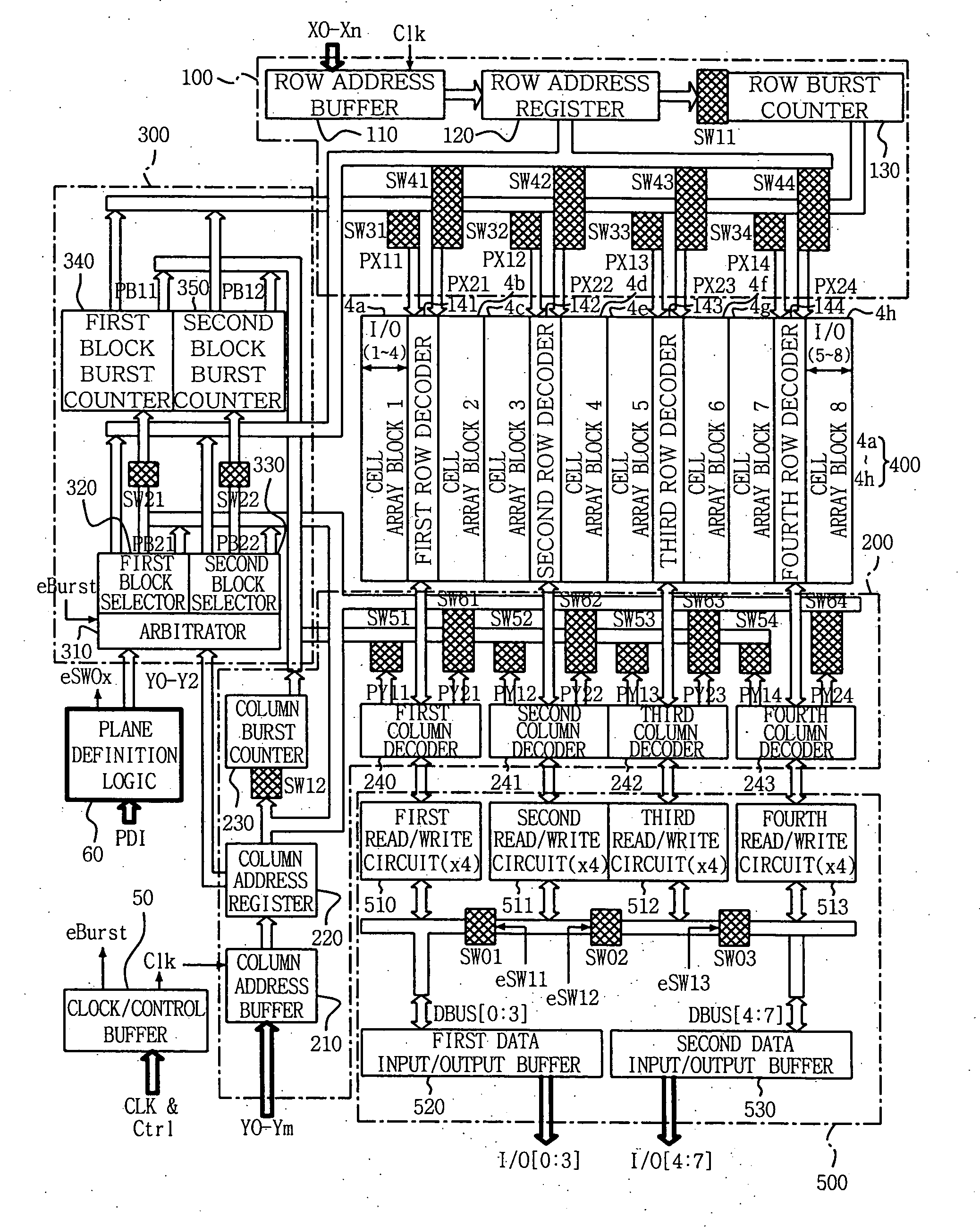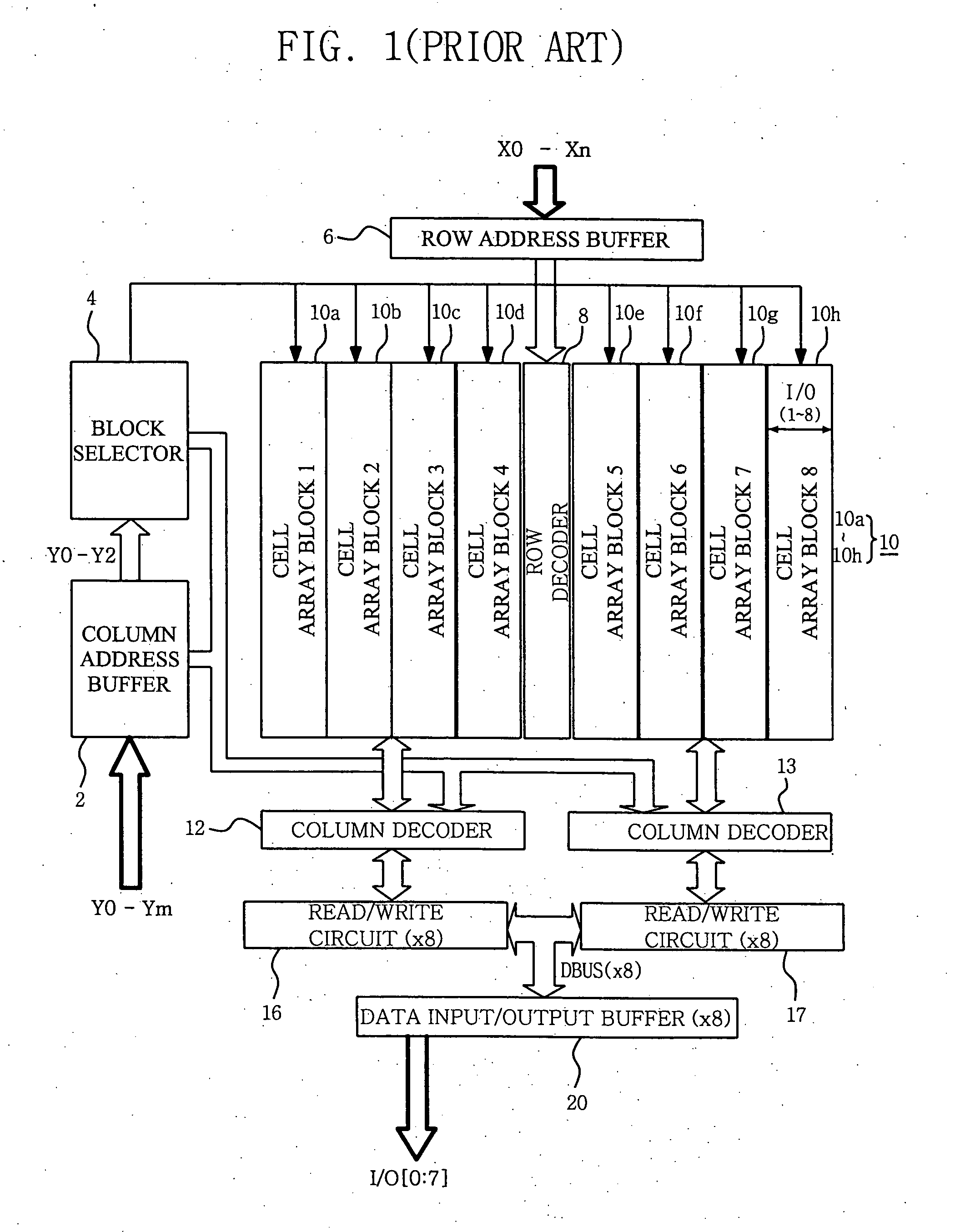Semiconductor memory device having memory architecture supporting hyper-threading operation in host system
a memory architecture and memory technology, applied in the field of semiconductor memory devices, can solve the problems of inability to implement parallel hyper-threading, ram modules used in these systems are typically not optimized for processor modules, and problems such as practical difficulties, to achieve the effect of avoiding the increase in space or price required by the memory system and increasing system performan
- Summary
- Abstract
- Description
- Claims
- Application Information
AI Technical Summary
Benefits of technology
Problems solved by technology
Method used
Image
Examples
Embodiment Construction
[0031] Exemplary embodiments of the invention are described below with reference to the corresponding drawings. These embodiments are presented as teaching examples. The actual scope of the invention is defined by the claims that follow.
[0032]FIG. 2 is a circuit diagram illustrating a memory architecture for a semiconductor memory device according to one embodiment of the present invention. Referring to FIG. 2, a semiconductor memory device comprises a clock / control buffer 50, a plane definition logic unit 60, a row decoding path 100, a column decoding path 200, a block selection path 300, a memory cell array 400 including a plurality of cell array blocks 4a through 4h, and a read / write path 500. Row decoding path 100 should be viewed to include first through fourth row decoders 141-144 in addition to those elements shown within a broken box corresponding to row decoding path 100. Plane definition logic unit 60 and block selection path 300 collectively function as a memory plane de...
PUM
| Property | Measurement | Unit |
|---|---|---|
| impedance | aaaaa | aaaaa |
| speed | aaaaa | aaaaa |
| processing speed | aaaaa | aaaaa |
Abstract
Description
Claims
Application Information
 Login to View More
Login to View More - R&D
- Intellectual Property
- Life Sciences
- Materials
- Tech Scout
- Unparalleled Data Quality
- Higher Quality Content
- 60% Fewer Hallucinations
Browse by: Latest US Patents, China's latest patents, Technical Efficacy Thesaurus, Application Domain, Technology Topic, Popular Technical Reports.
© 2025 PatSnap. All rights reserved.Legal|Privacy policy|Modern Slavery Act Transparency Statement|Sitemap|About US| Contact US: help@patsnap.com



